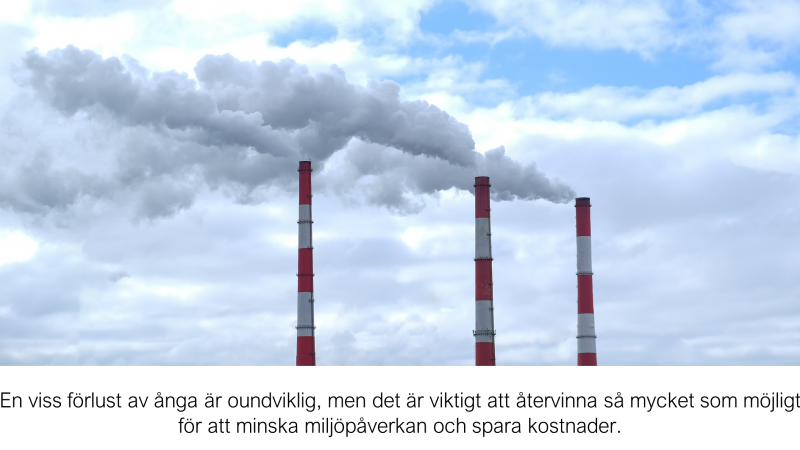Vimab makes Sweden more energy efficient
Steam provides power to large parts of Swedish industry. steam stops Sweden.
Steam started the first industrial revolution and it is still used to distribute energy in virtually all industrial processes that need heat. Many industrial processes use heat distributed by steam, such as the food industry, pulp and paper, chemical industry, oil refineries and nuclear power plants. Just to name a few.
Steam is used because it can hold a large amount of heat in relation to its volume, and it is easy to produce and distribute. The heat is transferred to the process by means of heat exchangers. Once the heat content has been used, the steam cools, condenses and becomes hot water, which can be returned to the boiler using steam traps.
Maximising yields
Vimab's job is to ensure that steam is used in the most efficient way and that as much of its energy content as possible is converted into productive work. In a plant that is not optimised in any way, as much as 45% of energy can be lost without doing any good.
? Some wastage is inevitable, but there are usually big savings to be made in most plants," says Sebastian Carlsson, who is responsible for technology and methodology support at Vimab.
? Steam costs between SEK 450 and 700 per tonne to generate, depending on the fuel used. One tonne of steam may sound like a lot, but it is soon chewed up in a large plant. So there are significant gains to be made.
? I was involved in servicing a large plant where we had to buy spare parts for SEK 300,000 after the vapour trap measurement. It was a significant expense. But after three months, the customer got back to us and said that the energy consumption had gone down so much that the investment had already paid off.
Efficient transfer of heat
Steam is water in a gaseous state. When water is converted into steam, it has a great capacity to retain heat and to transfer it to the process. Steam is formed by heating water in a boiler. When all the water is heated to 100 degrees, there is no water left in liquid form and the steam is said to be saturated. Further heating then results in the temperature of the steam rising above 100 degrees. Some processes can have a steam temperature of up to 400 degrees.
As heat is transferred to the process, the temperature of the vapour drops and some returns to liquid form as condensate.
? Condensed water retains a large part of its energy content, so you want to return as much as possible to the boiler. It is a big advantage to start with 80-degree water, compared to heating cold water," says Sebastian Carlsson.
All of this means that there are major economic benefits to be gained from streamlining the handling of steam. In addition, the environmental impact of the process is reduced through lower energy use.
Want to know more about vapour traps? Click here for more information.


